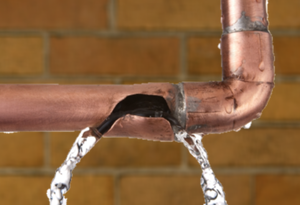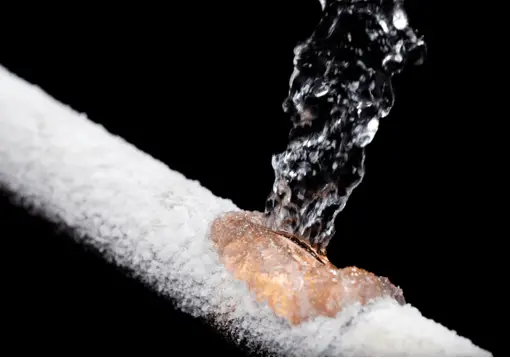Quick-Response Plumbing: Tips for Identifying and Dealing With Ruptured Pipes
Quick-Response Plumbing: Tips for Identifying and Dealing With Ruptured Pipes
Blog Article
Here in the next paragraph you might get a good deal of exceptional points on the subject of What to Know Before Installing a Dishwasher.

A ruptured pipe is a significant emergency; you can just stand as you view water you pay very much to rejoin with the earth. In even worse cases, you discover a swimming pool on your kitchen floor, which is a fantastic journey hazard, particularly if you have youngsters around. If the pipe that ruptured remained in your walls, problem: you might require to repaint that whole section.
Just how can a calamity like a burst pipe be protected against and handled? Well, by paying attention to your specialist emergency plumbings and complying with these regulations.
Just how do I know when my pipes have burst?
Changing water stress
Pipes do not simply burst in a day. You might have observed that your kitchen tap or shower does not run immediately when you transform the tap. It might pause for a couple of seconds and after that blast you with even more pressure than typical.
In various other instances, the water may appear regular at first, after that decrease in pressure after a couple of secs.
Contaminated water
Lots of people think a burst pipe is a one-way outlet. Rather the contrary. As water spurts of the hole or gouge in your plumbing system, pollutants locate their method.
Your water might be contaminated from the source, so if you can, inspect if your water container has any problems. Nevertheless, if your alcohol consumption water is supplied and cleansed by the local government, you should call your plumber instantly if you see or scent anything amusing in your water.
Puddles under pipelines and sinks
When a pipe bursts, the outflow develops a puddle. It may appear that the puddle is growing in size, and despite the amount of times you wipe the pool, in a couple of mins, there's an additional one waiting to be cleaned up. Typically, you might not have the ability to trace the puddle to any type of visible pipes. This is a sign to call a professional plumber.
Damp wall surfaces and also water discolorations
Prior to a pipe bursts, it will certainly leak, most times. If this relentless dripping goes unnoticed, the leakage might graduate into a vast tear in your pipeline. One simple way to prevent this emergency is to watch out for wet wall surfaces advertisement water spots. These water stains will certainly lead you right to the leakage.
Untraceable leaking noises
Pipeline bursts can happen in one of the most undesirable places, like within concrete, inside wall surfaces, or under sinks. When your home goes silent, you might be able to hear an irritatingly persistent trickling noise. Even after you have actually inspected your shower head and cooking area tap, the trickling might continue.
Beloved visitor, the dripping might be coming from a pipeline inside your wall surfaces. There isn't much you can do about that, other than tell a specialist plumber.
Turn up the Heat
Establish fans to blow warmth into cold spaces. Maintain the garage door closed. If you have actually minimized water flow, warm the most at risk pipes (normally in cellars and also crawl spaces or near outside walls) with a hair clothes dryer. Leave the faucet on while you use heat. As you thaw ice, the flow will certainly increase. To avoid pipes from cold, insulate your wall surfaces.
Beginning Eliminating the Water
Order the mop, pails and a store vacuum to begin to get rid of the water since you absolutely don't desire it soaking into every little thing else in the house. And also, a quick tidy up will certainly decrease the opportunities of something getting moldy.
What do I do when I detect a burst pipeline?
Your water meter will continue to run also while your water wastes. To decrease your losses, locate the main controls as well as transform the supply off. The water mains are an above-ground framework beside your home.
How to Fix & Detect a Leaking Pipe
How Do I Know if a Pipe is Leaking?
Leak detection tests can help you determine if your pipe has a leak. Even if you don’t see an apparent leak, you should still conduct leak detection tests regularly to save water and money—and prevent major damage to your home.
Water meter. It can be helpful to figure out what your usual water meter usage numbers are and then monitor them regularly. To monitor your meter, first, turn off all water faucets in your home. Check the meter and write down the numbers. In a few hours, check the meter again. If the numbers have changed, you have a leak. Water gauge. Use a water gauge to test your water pressure. Your showerhead should produce a certain amount of water pressure based on its model and design. If the pressure is lower than it is supposed to be for that specific showerhead, your home likely has a leak. Puddles. Look inside your bathroom, laundry, and kitchen sink cabinets. Puddles around the cabinets or around toilets, tubs, showers, and washing machines indicate the presence of a leaking pipe. You may also notice loose tiles, peeling or flaking paint, or mold caused by water accumulation. Napkin test. Even if you don’t see any puddles, you may still have a leak. You can test for water leaks in the bathroom, laundry, and kitchen by wiping below-sink connections with a napkin, paper towel, or piece of toilet paper. If it becomes damp, you probably have a leaking pipe under the sink. Discolored walls. Walls that are discolored—usually with brown or yellow stains—or bulging might mean that they have been impacted by water damage caused by a leaking pipe. Smell. A leaky pipe will create sitting water, and over time, that water may develop a musty smell. If your home smells musty, but you can’t locate the source, it may be due to a leak. Steps for Fixing a Leaking Pipe
A leaky drain can be remedied by tightening the pipe base, replacing the drain seal, caulking the rim, and tightening the pipe nut. Similarly, a leaking toilet pipe can be treated by tightening the packing nut. You may also need to replace the valve. A leaky faucet may just need tightening or replacement of the washers. If that doesn’t work, consider replacing your faucet. If your pipe has a hole in it, you may want to use a pipe leak sealer or pipe leak tape. This quick fix for water pipe leaks can also temporarily fix a copper pipe leak. https://www.ahs.com/home-matters/quick-tips/how-to-tell-if-pipes-are-leaking/

We were made aware of that article on How to Prepare for Your Dishwasher Installation from a friend on our other website. Are you aware of anybody else who is serious about How to Install and Connect a New Dishwasher? Why not share it. Thanks for your time. Visit us again soon.
Book My Estimate
Report this page